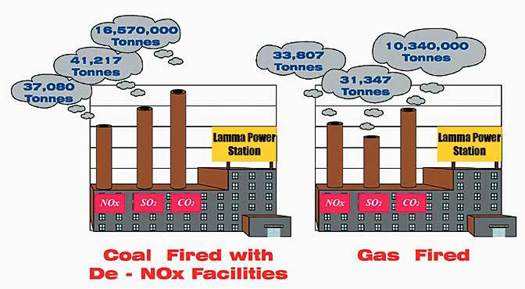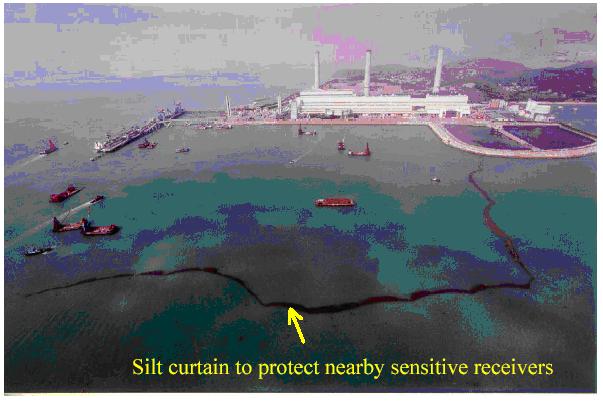|
 |
| Gas-fired Power Station Extension at Lamma 南丫島燃氣發電機組擴建工程 |
 |
| By shifting the base load from the existing coal-fired units to the new gas-fired units, a total of
6.5 million tonnes of CO2 emissions will be avoided in 2012. This means that the estimated
greenhouse gas emissions per unit of electricity produced in 2012 will be lowered by 37% as compared to 1990 levels despite the increase in power generating capacity.
|
| |
 |
| |
| Key Outcomes: |
| |
| Problem Avoided |
| |
| • |
Preferred location of the power station adjacent to the existing Lamma power station was a result of a thorough site selection exercise. The preferred site would cause minimum impacts to the environment. |
| • |
By shifting the baseload of the power station from less efficient coal-fired units to the 1800 MW gas-fired units, the air quality in 2012, in particular NOx and SO2, could be improved. A 2% reduction in Ozone concentration is anticipated in 2012. |
| • |
Preferred alignment of the gas pipeline avoided adverse impacts on corals near southwest tip of Lamma Island, Po Tai Islands, Waglan & Ping Chau. |
| • |
Preferred transmission cable landing points at Pak Kok Tsui at Lamma Island avoided adverse impacts on some uncommon and rare plant species. |
|
|
| |
| Environmental Friendly Design |
| |
| • |
Adopting a more environmental preferred gas-fired power station employing the combined cycle gas turbine forming an extension to the existing Lamma Power Station could improve the air quality in Hong Kong. |
| • |
With the implementation of the practical mitigation measures, in the areas of increased production and distribution efficiency, use of fuels with intrinsically low greenhouse gas emissions, improved consumption efficiency, reduced fugitive emissions, and carbon sequestration, recommended in the study, a total of 6.5 Mt of greenhouse gas emissions could be avoided in 2012. |
| • |
With the implementation of silt curtains during dredging and filling works for land formation, the water quality at sensitive receivers including Lo So Shing and Hung Shing Ye beaches could comply with the Water Quality Objectives for Suspended Solids, Dissolved Oxygen, Ammonia and Nutrients. |
| • |
The size of the 2°C temperature rise zone due to the dispersion of cooling water discharge could be reduced by 23% when comparing with the discharge from the existing plant. |
| • |
Impacts to soft corals within reclamation site would be mitigated through the provision of 31,000m² rubble mound seawall. |
| • |
Deployment of 400m³ of artificial reefs could enhance coral habitation |
| • |
To avoid disturbance of porpoises in southern waters, construction related vessels should approach the power plant site from the north and via East Lamma Channel. |
| • |
To avoid adverse impact to the finless porpoises, jet laying for the gas pipeline would be prohibited in southeast Lamma Island during spring peak in porpoise abundance. |
| • |
To minimize the water quality impact, a single dredger would be used for dredging at transmission cable landing points. |
|
|
| |
 |
Figure 1 HEC 1800 MW Gas Fired Power Station Extension |
|
 |
|
 |
